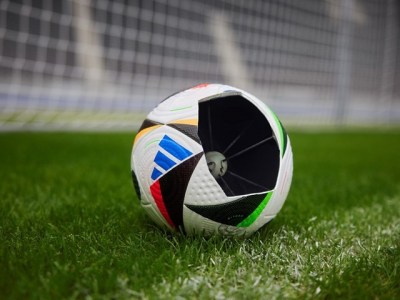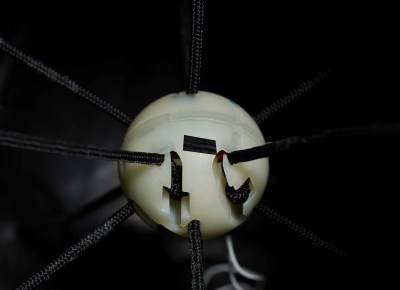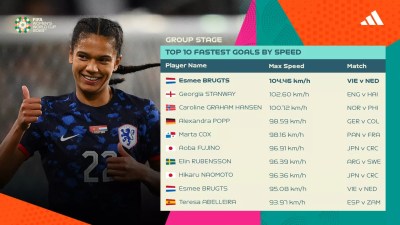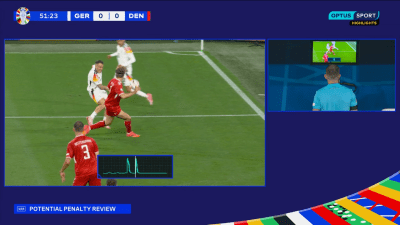
The good old fashioned game of football used to be a simple affair. Two teams of eleven, plus a few subs, who were all wrangled by a referee and a couple of helpful linesmen. Long ago, these disparate groups lived together in harmony. Then, everything changed when VAR attacked.
Suddenly, technology was being used to adjudicate all kinds of decisions, and fans were cheering or in uproar depending on how the hammer fell. That’s only become more prevalent in recent times, with smart balls the latest controversial addition to the world game. With their starring role in the Euro 2024 championship more than evident, let’s take a look at what’s going on with this new generation of intelligent footballs.
The Balls Are Connected

Adidas has been a pioneer of so-called “connected ball” technology. This involves fitting match balls with motion sensors which can track the motion of the ball in space. The aim is to be able to track the instant of player contact with the ball, for investigating matters like calls of handball and offside. The German country first debuted the technology at the 2022 World Cup, and it showed up at the 2023 Women’s World Cup and the UEFA Euro 2024 championship, too.
According to Adidas, an inertial measurement unit is suspended in the middle of the ball. This is done with a delicate structure that holds the IMU stably in place without impacting the performance of the ball from the player’s perspective. Powering the TDK ICM-20649 IMU is a small battery that can be recharged using an induction system. The IMU runs at a rate of 500 Hz, allowing hits to the ball to be measured down to tiny fractions of a second. The ball also features a DW1000 ultra-wideband radio system for position tracking, developed by Kinexion.

No more must match officials rely on their own perception, or even blurry video frames, to determine if a player touched the ball. Now, they can get a graphical readout showing acceleration spikes when a players foot, hand, or other body part impinges on the motion of the ball. This can then be used by the on-field referee and the video assistant referee to determine the right call more accurately. The idea is that this data removes a lot of the confusion from the refereeing process, giving officials exacting data on when a player may have touched the ball and when. No more wondering if this ball came close, or if that ball ricocheted based on a rough camera angle. What really happened is now being measured, and the data is all there for the officials to see, clear as day. What could be better, right?
Case In Point

The UEFA Euro 2024 championship was the latest battleground to showcase this technology. As the national teams of Europe went in to play critical matches, players and fans alike knew that this technology would be on hand to ensure the fairest playing field yet. You might think that it would leave everyone feeling happier about how their favored team got treated, but as always, humans don’t react so predictably when emotions are hot and national pride is on the line.
The match between Germany and Denmark was the perfect example of how technology could sway a game, one way or the other. The Video Assistant Referee killed Denmark’s first goal with a ruling from the Semi-Automated Offside Technology system, and the ball technology would soon curse the Danes, too. As Germany’s David Raum crossed the ball, it ever so slightly clipped the hand of Danish player Joachim Andersen. In the past, this might have gone unnoticed, or at the least unpunished. But in today’s high-tech world, there was data to reveal the crime in explicit detail.
As the video replays showed the footage, we were treated to a graph indicating the spike picked up by the ball’s sensors just as it clipped Andersen’s hand in the video. The referee thus granted a penalty for the handball, which has duly slotted home by German striker Kai Havertz. Germany would go on to win the match 2-0, with midfielder Jamal Musiala scoring the follow-up.
The incident inflamed fans and pundits alike, with the aftermath particularly fiery on ITV. “If he didn’t pay that, if he did pay that, we’d be saying, okay, he saw it that way,” said football manager Ange Postecoglou, noting that the technology was creating frustration in a way that traditional referring decisions did not. Meanwhile, others noted that the technology is, to a degree, now in charge. “[Referee] Michael Oliver cannot go to that monitor and say I refuse to take that recommendation,” said VAR pundit Christina Unkel. “This has been issued by FIFA as what he needs to take for consistency across the world.”
Fundamentally, smart ball technology is not so different from other video assist technologies currently being used in football. These tools are flooding in thick and fast for good reason. They are being introduced to reduce variability in refereeing decisions, and ultimately, to supposedly improve the quality of the sport.
Sadly, though, smart balls seem to be generating much the same frustration as VAR has done so in the past. It seems when a referee is solely at fault for a decision, the fans can let it go. However, when a smart ball or a video referee disallows a goal because of a matter of some inches or millimeters, there’s an uproar so predictable that you can set your watch to it.
Given the huge investment and the institutional backing, don’t expect these technologies to go away any time soon. Similarly, expect fan outrage to blossom most every time they are they used. For now, smart balls and VAR have the backing they need to stay on, so you’d best get used to them for now.
